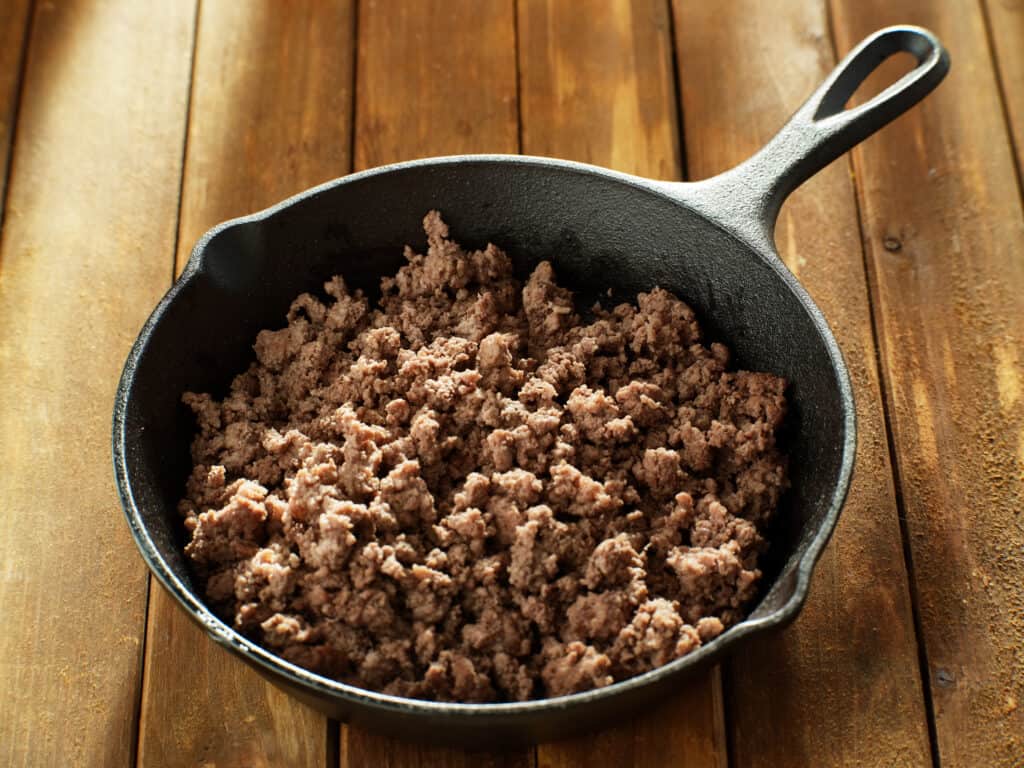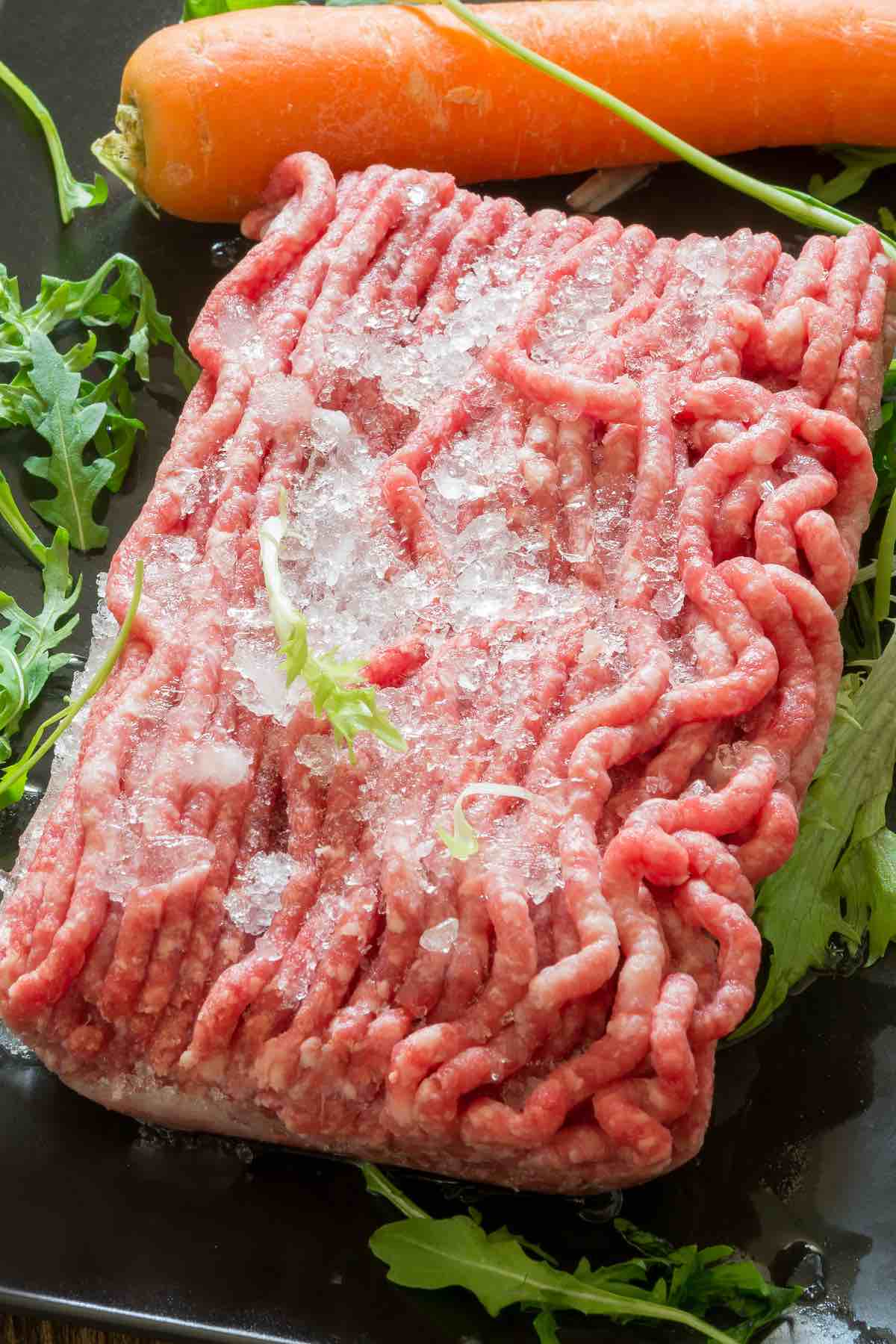Ground beef is an affordable staple ingredient used in numerous dishes such as tacos, chili and shepherd’s pie. By following certain storage tips it can last for days even in the fridge!
However, if cooked ground beef has been in your refrigerator for seven days or displays signs of spoilage such as off odors or discoloration, it’s best to discard it!
Temperature
Maintaining proper temperatures when it comes to ground beef is crucial for food safety. If left exposed for too long at temperatures above 40 degrees Fahrenheit, bacteria can grow quickly and become unsafe to consume. Therefore, once cooked ground beef has been prepared it must be refrigerated immediately as soon as it comes out of the pan and refrigerated promptly after you remove from heat source. Be mindful when purchasing it from stores to check sell-by and expiration dates to ensure it will stay fresh longer.
For optimal storage of cooked ground beef, it’s essential that it be placed in an airtight container or tightly sealed plastic or aluminum foil packages. This will prevent moisture and odors from spoiling it more rapidly. Furthermore, make sure the refrigerator temperature is set between 40 degrees Fahrenheit and 48 degrees Fahrenheit for best results.
Raw beef can often be readily identifiable when it has gone bad; however, cooked beef may be harder to detect. If the texture feels slimy or sticky, this could indicate spoilage. You can test cooked beef by squeezing small samples in your hand; if they have a smooth and firm consistency that remains safe to eat but slimy or sticky textures suggest contamination by bacteria, discard it immediately.
One effective method for testing whether ground beef has gone bad is using a thermometer to ensure it has reached 160 degrees Fahrenheit or above. This should kill off any pathogens present; however, recent research has demonstrated that some patties may appear well-done even though their internal temperatures may actually be much lower than this threshold.
If you’re concerned that ground beef won’t last in the fridge for long enough, consider freezing it instead. Freezing will preserve its quality and taste for up to three months when done correctly; simply label clearly and transfer it to a freezer-safe container before popping it in your freezer.
Oxygen
Ground beef is a versatile meat that can be used in numerous recipes, from burritos and tacos to chili, meatloaf, and more. To maintain freshness of ground beef it should be stored in an airtight container and heated before eating – this will ensure all parts of it have been fully cooked to avoid food poisoning and prevent spoilage.
Cooked ground beef will last longer in your refrigerator than raw, as there’s less surface area for bacteria to adhere to. Still, when cooking and storing your ground beef it is imperative to use a food thermometer and then place in an airtight container afterward.
One of the telltale signs that ground beef has gone bad is a change in color. While fresh ground beef should remain vibrant red, over time its color may fade to dull red or brown due to oxygen loss during storage. While these changes don’t necessarily signify spoilage, they could indicate it has passed its expiration date and should be consumed quickly before its spoilage set in.
If your cooked ground beef has changed color or is slimy in texture, this could be a telltale sign that it has gone bad and could potentially lead to food poisoning.
Once your beef has changed in color, another indicator that it has gone bad is an off-putting foul or sour smell. If you are uncertain whether ground beef has turned bad, try smelling or touching it and if there is an unpleasant odor or slimy texture present it is best discarded to protect your family and keep the refrigerator tidy. For extra cooked ground beef you can store in the freezer up to three months, although remembering it must first be thawed completely before being used in recipes.

Moisture
Ground beef is more susceptible to cross-contamination than other cuts of meat due to its larger surface area and more potential places for bacteria or contaminants to cling onto it, quickly spoiling. Even after being thoroughly cooked, pathogens could still get into your ground beef from dirty hands, cooking equipment, or storage containers – making its storage unsanitary as a result.
As such, it’s essential that when handling raw meat you always wash your hands afterwards and ensure your storage containers are hygienic. Furthermore, keep both raw and cooked meat separate in your refrigerator to prevent juices from raw beef spoiling cooked meat too early.
Cooked ground beef has a much longer shelf life in the refrigerator than raw ground beef does, according to USDA estimates. Accordingly, it can last four days in the fridge and up to three months in the freezer if properly stored and defrosted first before reheating it on either the stove or in an oven or skillet.
Paying close attention to the sell-by or expiration dates on ground beef can give you an accurate idea of its shelf life in your fridge, and should you detect signs that it has begun spoiling, it should be discarded immediately as eating spoiled food could pose severe health complications.
if you’re uncertain if your ground beef has gone bad, use your sense of smell as a guideline. Fresh ground beef should have an appealing beefy aroma while those that have gone off have an unpleasant odor with foul undertones that should make their presence known quickly. If this occurs with your ground beef it may be best to discard and try other delicious recipes with fresh and flavorful ingredients instead!
Bacteria
Once properly cooked, ground beef should not contain any bacteria that can make you sick. But improper handling or long exposure at room temperature can allow harmful organisms to thrive and spread into the meat, leading to sickness and illness for those eating it.
Use a food thermometer to ensure your meat is at an appropriate temperature to kill any harmful bacteria that might otherwise contaminate its surface. Also be careful when handling raw meat in your kitchen and don’t let it come in contact with anything else; otherwise it could spread harmful bacteria to surfaces like counters and other foods before becoming infectious and making you sick when eaten by later generations.
E coli bacteria is the main culprit behind illness caused by ground beef. This pathogen can lead to diarrhea, cramps and other signs of food poisoning. E coli O157:H7 strain is especially harmful as it produces toxins which damage intestinal walls.
Clostridium perfringens and Staphylococcus aureus bacteria can contaminate ground beef, potentially leading to food poisoning if handled incorrectly or entering your digestive system through poor food hygiene practices.
Ground beef should always be stored properly to preserve quality and should never go bad, which includes being smelly or slimy, darker than it should be or developing mold. If any of these signs present themselves then you should throw it out.
Trying to save some of your cooked ground beef? Freezing it for three to four days may help! Just ensure it is placed in an airtight container to prevent contamination or thawing out.
If you have a large amount of cooked ground beef on hand, labeling its containers can help. That way, it is easier for you to see when its shelf life has ended and to plan out meals accordingly.

